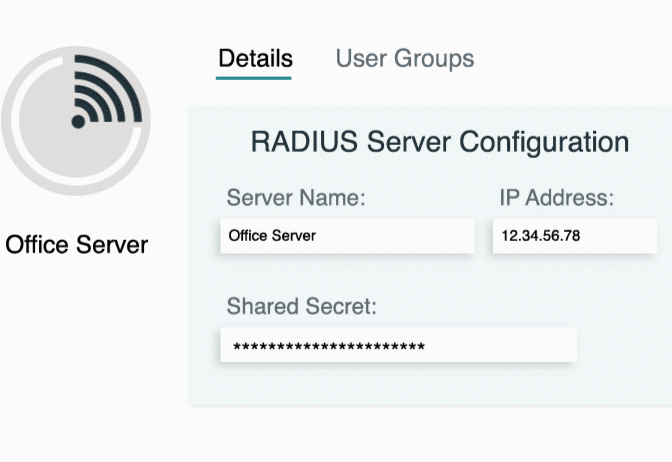Updated on May 21, 2025
A source IP address is the numerical label assigned to a device initiating communication over a network. It identifies the origin of network traffic, allowing systems to route data packets back to the correct sender.
Definition and Core Concepts
A Source IP Address is a unique numerical label assigned to the sending device’s network interface during data transmission in a network. It is represented as a 32-bit number for Internet Protocol version 4 (IPv4) or a 128-bit number for Internet Protocol version 6 (IPv6). This address identifies the origin of the transmitted data, enabling two-way communication between devices.
Here are the core concepts you need to understand:
IP Address (IPv4 and IPv6)
An IP address is the heart of communication in networking. IPv4 addresses look like this: 192.168.1.1 and are composed of four numeric blocks. IPv6, a newer protocol, provides significantly more address space and looks like this example: 2001:0db8:85a3:0000:0000:8a2e:0370:7334.
The Source IP Address within an IP packet tells the receiving device where the packet originated.
Sender Identification
The Source IP Address acts as a digital signature for the originating device. This is critical for identifying the sender and establishing a return communication path.
Network Interface
A network interface is the point of connection between a device and the network. Each device typically uses at least one network interface that is assigned a unique IP address.
Packet Header
An IP packet, the basic unit of data exchange in networking, features a header. The header contains key information, including the Source IP Address, which is essential for routing the data.
Routing
Once the Source IP Address is included in a packet, routers utilize it to ensure the return path of communication is directed back to the sender. By examining both the Source and Destination IP Addresses, routers efficiently manage network data flow.
Destination IP Address
Every packet contains not only a Source IP Address but also a Destination IP Address. While the Source IP highlights the sender, the Destination IP focuses on where the data is headed.
How It Works
The function of a Source IP Address revolves around ensuring seamless data exchange in IP networks. Here’s an overview of how it works:
Assignment to Sending Device
When a device connects to a network, it is assigned an IP address, whether dynamically through DHCP (Dynamic Host Configuration Protocol) or statically by a network administrator.
Inclusion in IP Packet Header
Whenever the device sends data, its Source IP Address is embedded in the header of the IP packet to inform the receiving device of its origin.
Use by Routers for Return Path
Routers analyze the packet header to determine where to send responses. The Source IP Address acts as the destination for return packets, enabling two-way communication.
Logging and Auditing
Network administrators rely on Source IP Addresses for detailed logging and auditing to track the origin of network traffic. This is essential for troubleshooting and maintaining network security.
Potential for Spoofing
Malicious actors can forge or spoof a Source IP Address to conceal their identity or redirect responses to unintended recipients. This makes monitoring and securing Source IP traffic critical for network integrity.
Key Features and Components
The Source IP Address is integral to network communication due to its ability to establish the sender’s identity and ensure data flows correctly. Below are its key features:
Origin Identification
The Source IP Address identifies the origin of data packets, enabling devices to recognize where network communication originates.
Essential for Two-Way Communication
Without a Source IP Address, a receiving device would have no way to send a response back to the sender, which is critical in maintaining stateful connections.
Used in Routing
Routers need the Source and Destination IP Addresses to complete data transmission. They determine the best path for data based on these addresses.
Subject to Network Address Translation (NAT)
NAT is a networking concept that maps private IP addresses within a local network to a public IP address for external communication. NAT allows multiple devices to share a single public IP address, but it also masks the Source IP Address of individual devices.
Use Cases and Applications
Source IP Addresses play a crucial role in numerous networking scenarios. Here are some of their common applications:
All IP Communication
Whether browsing the web, streaming videos, or communicating in local networks, Source IP Addresses facilitate the smooth exchange of data packets between devices on the internet or within a local network.
Server Logging
Servers often log Source IP Addresses to track incoming requests, identify potential errors, or mitigate suspicious activity. Logs of Source IPs are vital for cybersecurity and compliance.
Firewall Rules
Firewalls use both Source and Destination IP Addresses to allow or block traffic. By examining the Source IP Address, firewalls can enforce security policies and prevent unauthorized access.
Network Security
Understanding Source IP Addresses helps identify unusual or malicious traffic patterns. Security analysts monitor IP addresses for intrusions, enabling them to take swift action when anomalies are detected.
Troubleshooting
When network administrators face connectivity issues, they often turn to Source IP logs to trace the origin of the problem, diagnose it, and restore functionality.
Key Terms Appendix
- Source IP Address: The numerical label assigned to the sending device’s network interface, identifying the origin of data packets.
- IP Address: A unique identifier assigned to a device to enable communication within a network.
- Sender: The device that initiates data transmission over the network.
- Network Interface: The hardware or software point where a device connects to a network.
- Packet Header: The section of an IP packet containing key metadata, such as Source and Destination IP Addresses.
- Routing: The process of directing data packets from their source to their intended destination across a network.
- Destination IP Address: The numerical label identifying the intended recipient of the transmitted data.
- NAT (Network Address Translation): A process that modifies IP address information in packet headers, allowing multiple devices to share a single public IP address.






